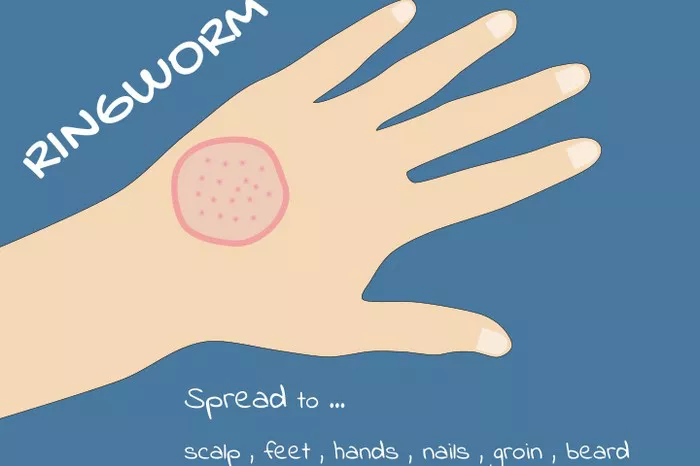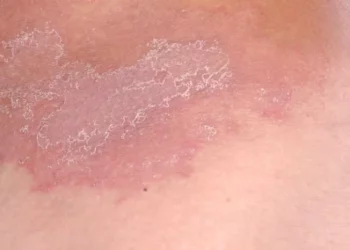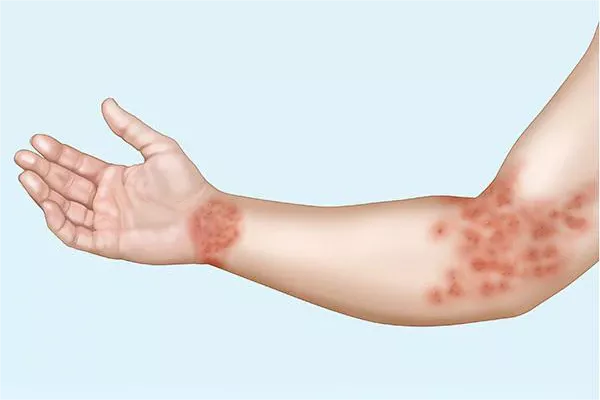Ringworm, a common fungal infection caused by dermatophytes, is a condition that affects both humans and animals. Despite its name, ringworm is not caused by a worm but by fungi that thrive in warm, moist environments. The infection presents as a red, circular, and itchy rash on the skin, and it can spread through direct contact with infected individuals, animals, or contaminated surfaces. One of the common concerns is the survival of ringworm on inanimate objects, particularly bedding. This article explores the longevity of ringworm on bedding and provides guidance on prevention and treatment.
Understanding Ringworm
Ringworm, medically known as tinea, can affect various parts of the body, including the scalp (tinea capitis), body (tinea corporis), feet (tinea pedis or athlete’s foot), and groin (tinea cruris or jock itch). The fungi responsible for ringworm are dermatophytes, primarily Trichophyton, Microsporum, and Epidermophyton species. These fungi feed on keratin, a protein found in the outer layer of the skin, hair, and nails.
Transmission and Contamination
Ringworm spreads through direct contact with an infected person or animal. It can also spread indirectly through contact with contaminated objects and surfaces. Bedding, clothing, towels, and personal items can harbor the fungi, making it essential to understand how long these pathogens can survive outside a host.
Survival of Ringworm on Bedding
The longevity of ringworm fungi on bedding depends on various factors, including the type of material, environmental conditions, and the presence of organic matter. Dermatophytes can survive on bedding and other fabrics for extended periods, posing a risk of re-infection or transmission to others.
1. Material of Bedding: Fungi can survive longer on materials that retain moisture, such as cotton and other natural fibers. Synthetic materials, which tend to be less absorbent, may not support the fungi’s survival as long.
2. Environmental Conditions: Dermatophytes thrive in warm, moist environments. Bedding in humid conditions can support the fungi’s survival for weeks. Conversely, dry conditions can reduce their lifespan.
3. Presence of Organic Matter: Fungi feed on organic matter, including skin cells, hair, and sweat. Bedding contaminated with these substances can provide nutrients for the fungi, extending their survival.
Research indicates that dermatophytes can survive on bedding for up to 12 months under favorable conditions. However, in most household environments, the survival period is likely to be shorter, typically ranging from a few days to a couple of weeks.
Preventing Ringworm Contamination in Bedding
Preventing ringworm contamination in bedding requires diligent hygiene practices and regular cleaning. Here are some steps to minimize the risk:
1. Regular Washing: Wash bedding, including sheets, pillowcases, and blankets, regularly in hot water (at least 140°F or 60°C) to kill the fungi. Use a fungicidal laundry detergent if available.
2. Drying: Thoroughly dry bedding in a hot dryer or under direct sunlight. High temperatures help kill any remaining fungi.
3. Avoid Sharing: Do not share bedding, towels, or personal items with others, especially if someone in the household is infected with ringworm.
4. Vacuuming: Regularly vacuum mattresses, upholstery, and carpets to remove any skin cells or hair that could harbor fungi.
5. Protective Covers: Use mattress and pillow covers that are resistant to fungal growth. These covers can create a barrier and make cleaning easier.
6. Personal Hygiene: Maintain good personal hygiene, including regular bathing and washing of hands and feet. Keep skin dry and clean, especially in areas prone to sweating.
Treating Ringworm Infections
If you or someone in your household contracts ringworm, it is crucial to treat the infection promptly to prevent its spread and recurrence. Treatment typically involves topical or oral antifungal medications.
1. Topical Antifungals: Over-the-counter antifungal creams, ointments, and sprays containing ingredients like clotrimazole, miconazole, or terbinafine can effectively treat mild cases of ringworm. Apply the medication as directed for the prescribed duration.
2. Oral Antifungals: For more severe or widespread infections, oral antifungal medications may be necessary. Common oral antifungals include terbinafine, itraconazole, and fluconazole. These medications require a prescription from a healthcare provider.
3. Medical Consultation: Consult a healthcare provider if the infection does not improve with over-the-counter treatments, if it spreads to multiple areas of the body, or if it affects the scalp or nails. A healthcare provider can recommend the most appropriate treatment plan.
SEE ALSO: Does Isopropyl Alcohol Kill Ringworm?
Decontaminating the Environment
In addition to treating the infection, it is essential to decontaminate the environment to prevent reinfection and transmission to others. Here are some steps to decontaminate your home:
1. Cleaning Surfaces: Clean and disinfect all surfaces that may have come into contact with the infected person or animal, including floors, countertops, and bathroom fixtures. Use a disinfectant that is effective against fungi.
2. Washing Personal Items: Wash clothing, towels, and other personal items that may have been contaminated with the fungi in hot water and detergent. Dry them thoroughly.
3. Grooming Pets: If a pet is the source of the infection, take them to a veterinarian for treatment. Regularly groom and bathe pets to minimize the risk of fungal infections.
4. Discarding Contaminated Items: In severe cases, it may be necessary to discard heavily contaminated items, such as old bedding or worn-out shoes, to prevent reinfection.
Ringworm in Pets
Pets, particularly cats and dogs, can be carriers of ringworm. It is important to monitor your pets for signs of infection, such as hair loss, scaly patches, and itching. If you suspect your pet has ringworm, take them to a veterinarian for diagnosis and treatment. Preventing and treating ringworm in pets is essential to reducing the risk of transmission to humans.
Conclusion
Ringworm is a common fungal infection that can survive on bedding and other fabrics for extended periods, particularly under favorable conditions. Understanding the survival of ringworm on bedding and implementing effective hygiene practices are crucial in preventing and managing the infection. Regular washing, drying, and decontaminating of bedding, along with prompt treatment of infections, can significantly reduce the risk of transmission and reinfection. By maintaining good personal and household hygiene, you can protect yourself and your loved ones from the discomfort and inconvenience of ringworm infections.
Related Topics:



























